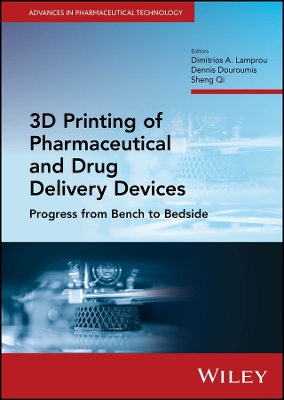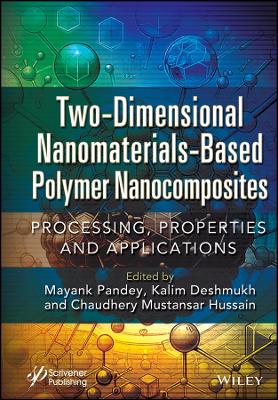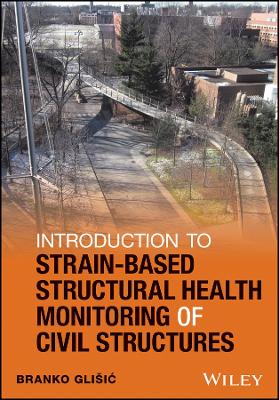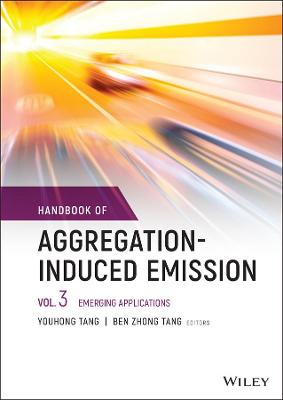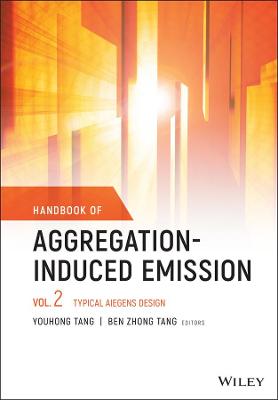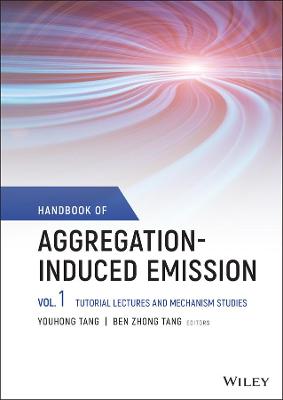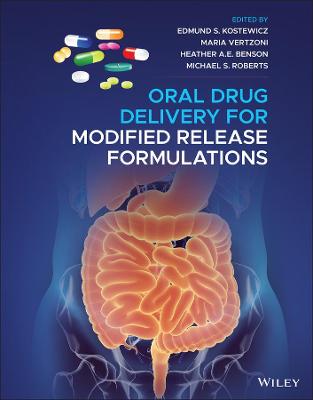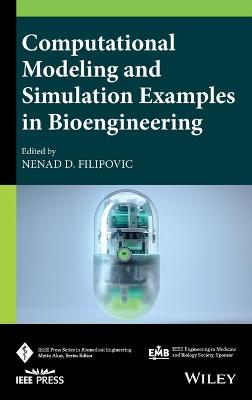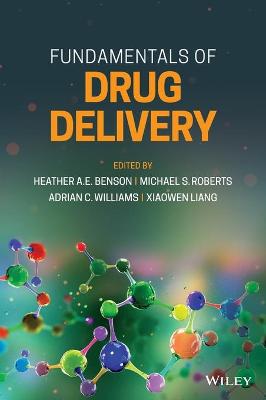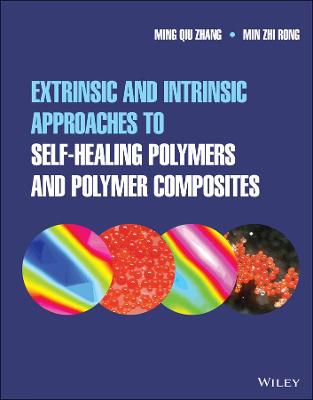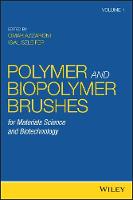Applications of Metal-Organic Frameworks and Their Derived Materials
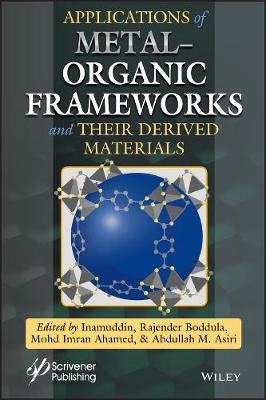 -15%
portes grátis
-15%
portes grátis
Applications of Metal-Organic Frameworks and Their Derived Materials
Ahamed, Mohd Imran; Inamuddin; Asiri, Abdullah M.; Boddula, Rajender
John Wiley & Sons Inc
06/2020
496
Dura
Inglês
9781119650980
15 a 20 dias
826
1 Application of MOFs and Their Derived Materials in Sensors 1
Yong Wang, Chang Yin and Qianfen Zhuang
1.1 Introduction 1
1.2 Application of MOFs and Their Derived Materials in Sensors 3
1.2.1 Optical Sensor 3
1.2.1.1 Colorimetric Sensor 3
1.2.1.2 Fluorescence Sensor 7
1.2.1.3 Chemiluminescent Sensor 11
1.2.2 Electrochemical Sensor 13
1.2.2.1 Amperometric Sensor 13
1.2.2.2 Impedimetric, Electrochemiluminescence, and Photoelectrochemical Sensor 16
1.2.3 Field-Effect Transistor Sensor 19
1.2.4 Mass-Sensitive Sensor 21
1.3 Conclusion 22
Acknowledgments 23
References 23
2 Applications of Metal-Organic Frameworks (MOFs) and Their Derivatives in Piezo/Ferroelectrics 33
H. Manjunatha, K. Chandra Babu Naidu, N. Suresh Kumar, Ramyakrishna Pothu and Rajender Boddula
2.1 Introduction 34
2.1.1 Brief Introduction to Piezo/Ferroelectricity 34
2.2 Fundamentals of Piezo/Ferroelectricity 34
2.3 Metal-Organic Frameworks for Piezo/Ferroelectricity 40
2.4 Ferro/Piezoelectric Behavior of Various MOFs 40
2.5 Conclusion 52
References 53
3 Fabrication and Functionalization Strategies of MOFs and Their Derived Materials "MOF Architecture" 63
Demet Ozer
3.1 Introduction 63
3.2 Fabrication and Functionalization of MOFs 65
3.2.1 Metal Nodes 65
3.2.2 Organic Linkers 68
3.2.3 Secondary Building Units 76
3.2.4 Synthesis Methods 77
3.2.4.1 Hydrothermal and Solvothermal Method 77
3.2.4.2 Microwave Synthesis 78
3.2.4.3 Electrochemical Method 80
3.2.4.4 Mechanochemical Synthesis 81
3.2.4.5 Sonochemical (Ultrasonic Assisted) Method 81
3.2.4.6 Diffusion Method 82
3.2.4.7 Template Method 82
3.2.5 Synthesis Strategies 83
3.3 MOF Derived Materials 89
3.4 Conclusion 90
References 90
4 Application of MOFs and Their Derived Materials in Molecular Transport 101
Arka Bagchi, Partha Saha, Arunima Biswas and SK Manirul Islam
4.1 Introduction 102
4.2 MOFs as Nanocarriers for Membrane Transport 102
4.2.1 MIL-89 103
4.2.2 MIL-88A 103
4.2.3 MIL-100 104
4.2.4 MIL-101 104
4.2.5 MIL-53 104
4.2.6 ZIF-8 104
4.2.7 Zn-TATAT 105
4.2.8 BioMOF-1 (Zn) 105
4.2.9 UiO (Zr) 105
4.3 Conclusion 106
References 106
5 Role of MOFs as Electro/-Organic Catalysts 109
Manorama Singh, Ankita Rai, Vijai K. Rai, Smita R. Bhardiya and Ambika Asati
5.1 What Is MOFs 109
5.2 MOFs as Electrocatalyst in Sensing Applications 111
5.3 MOFs as Organic Catalysts in Organic Transformations 114
5.4 Conclusion and Future Prospects 115
References 116
6 Application of MOFs and Their Derived Materials in Batteries 121
Rituraj Dutta and Ashok Kumar
6.1 Introduction 122
6.2 Metal-Organic Frameworks 126
6.2.1 Classification and Properties of Metal-Organic Frameworks 127
6.2.2 Potential Applications of MOFs 130
6.2.3 Synthesis of MOFs 133
6.3 Polymer Electrolytes 135
6.3.1 Historical Perspectives and Classification of Polymer Electrolytes 136
6.3.2 MOF Based Polymer Electrolytes 139
6.4 Ionic Liquids 142
6.4.1 Properties of Ionic Liquids 143
6.4.2 Ionic Liquid Incorporated MOF 145
6.5 Ion Transport in Polymer Electrolytes 147
6.5.1 General Description of Ionic Conductivity 147
6.5.2 Models for Ionic Transport in Polymer Electrolytes 148
6.5.3 Impedance Spectroscopy and Ionic Conductivity Measurements 152
6.5.4 Concept of Mismatch and Relaxation 155
6.5.5 Scaling of ac Conductivity 156
6.6 IL Incorporated MOF Based Composite Polymer Electrolytes 157
6.7 Conclusion and Perspectives 166
References 168
7 Fine Chemical Synthesis Using Metal-Organic Frameworks as Catalysts 177
Aasif Helal
7.1 Introduction 177
7.2 Oxidation Reaction 179
7.2.1 Epoxidation 179
7.2.2 Sulfoxidation 181
7.2.3 Aerobic Oxidation of Alcohols 182
7.3 1,3-Dipolar Cycloaddition Reaction 183
7.4 Transesterification Reaction 183
7.5 C-C Bond Formation Reactions 184
7.5.1 Heck Reactions 184
7.5.2 Sonogashira Coupling 186
7.5.3 Suzuki Coupling 186
7.6 Conclusion 187
References 187
8 Application of Metal Organic Framework and Derived Material in Hydrogenation Catalysis 193
Tejaswini Sahoo, Jagannath Panda, Jnana Ranjan Sahu and Rojalin Sahu
8.1 Introduction 193
8.1.1 The Active Centers in Parent MOF Materials 195
8.1.2 The Active Centers in MOF Catalyst 195
8.1.3 Metal Nodes 196
8.2 Hydrogenation Reactions 197
8.2.1 Hydrogenation of Alpha-Beta Unsaturated Aldehyde 197
8.2.2 Hydrogenation of Cinnamaldehyde 198
8.2.3 Hydrogenation of Nitroarene 199
8.2.4 Hydrogenation of Nitro Compounds 201
8.2.5 Hydrogenation of Benzene 202
8.2.6 Hydrogenation of Quinoline 205
8.2.7 Hydrogenation of Carbon Dioxide 206
8.2.8 Hydrogenation of Aromatics 207
8.2.9 Hydrogenation of Levulinic Acid 207
8.2.10 Hydrogenation of Alkenes and Alkynes 208
8.2.11 Hydrogenation of Phenol 210
8.3 Conclusion 210
References 211
9 Application of MOFs and Their Derived Materials in Solid-Phase Extraction 219
Adrian Gutierrez-Serpa, Ivan Taima-Mancera, Jorge Pasan, Juan H. Ayala and Veronica Pino
9.1 Solid-Phase Extraction 220
9.1.1 Materials in SPE 223
9.2 MOFs and COFs in Miniaturized Solid-Phase Extraction (?SPE) 225
9.3 MOFs and COFs in Miniaturized Dispersive Solid-Phase Extraction (D-?SPE) 232
9.4 MOFs and COFs in Magnetic-Assisted Miniaturized Dispersive Solid-Phase Extraction (m-D-?SPE) 239
9.5 Concluding Remarks 249
Acknowledgments 249
References 249
10 Anticancer and Antimicrobial MOFs and Their Derived Materials 263
Nasser Mohammed Hosny
10.1 Introduction 263
10.2 Anticancer MOFs 264
10.2.1 MOFs as Drug Carriers 264
10.2.2 MOFs in Phototherapy 269
10.3 Antibacterial MOFs 272
10.4 Antifungal MOFs 278
References 280
11 Theoretical Investigation of Metal-Organic Frameworks and Their Derived Materials for the Adsorption of Pharmaceutical and Personal Care Products 287
Jagannath Panda, Satya Narayan Sahu, Tejaswini Sahoo, Biswajit Mishra, Subrat Kumar Pattanayak and Rojalin Sahu
11.1 Introduction 288
11.2 General Synthesis Routes 290
11.2.1 Hydrothermal Synthesis 295
11.2.2 Solvothermal Synthesis of MOFs 296
11.2.3 Room Temperature Synthesis 296
11.2.4 Microwave Assisted Synthesis 296
11.2.5 Mechanochemical Synthesis 297
11.2.6 Electrochemical Synthesis 297
11.3 Postsynthetic Modification in MOF 297
11.4 Computational Method 297
11.5 Results and Discussion 299
11.5.1 Binding Behavior Between MIL-100 With the Adsorbates (Diclofenac, Ibuprofen, Naproxen, and Oxybenzone) 299
11.6 Conclusion 303
References 304
12 Metal-Organic Frameworks and Their Hybrid Composites for Adsorption of Volatile Organic Compounds 313
Shella Permatasari Santoso, Artik Elisa Angkawijaya, Vania Bundjaja, Felycia Edi Soetaredjo and Suryadi Ismadji
12.1 Introduction 314
12.2 VOCs and Their Potential Hazards 315
12.2.1 Other Sources of VOCs 319
12.3 VOCs Removal Techniques 320
12.4 Fabricated MOF for VOC Removal 324
12.4.1 MIL Series MOFs 325
12.4.2 Isoreticular MOFs 327
12.4.2.1 Adsorption Comparison of the Isoreticular MOFs 330
12.4.3 NENU Series MOFs 332
12.4.4 MOF-5, Eu-MOF, and MOF-199 333
12.4.5 Amine-Impregnated MIL-100 334
12.4.6 Biodegradable MOFs MIL-88 Series 335
12.4.7 Catalytic MOFs 335
12.4.8 Photo-Degradating MOFs 336
12.4.9 Some Other Studied MOFs 337
12.5 MOF Composites 338
12.5.1 MIL-101 Composite With Graphene Oxide 338
12.5.2 MIL-101 Composite With Graphite Oxide 338
12.6 Generalization Adsorptive Removal of VOCs by MOFs 340
12.7 Simple Modeling the Adsorption 340
12.7.1 Thermodynamic Parameters 340
12.7.2 Dynamic Sorption Methods 341
12.8 Factor Affecting VOCs Adsorption 344
12.8.1 Breathing Phenomena 344
12.8.2 Activation of MOFs 345
12.8.3 Applied Pressure 346
12.8.4 Relative Humidity 347
12.8.5 Breakthrough Conditions 347
12.8.6 Functional Group of MOFs 347
12.8.7 Concentration, Molecular Size, and Type of VOCs 348
12.9 Future Perspective 349
References 350
13 Application of Metal-Organic Framework and Their Derived Materials in Electrocatalysis 357
Gopalram Keerthiga, Peramaiah Karthik and Bernaurdshaw Neppolian
List of Abbreviations 358
13.1 Introduction 358
13.2 Perspective Synthesis of MOF , and Their Derived Materials 360
13.3 MOF for Hydrogen Evolution Reaction 362
13.4 MOF for Oxygen Evolution Reaction 363
13.5 MOF for Oxygen Reduction Reaction 365
13.6 MOF for CO2 Electrochemical Reduction Reaction 366
13.6.1 Electrosynthesis of MOF for CO2 Reduction 366
13.6.2 Composite Electrodes as MOF for CO2 Reduction 367
13.6.3 Continuous Flow Reduction of CO2 369
13.6.4 CO2 Electrochemical Reduction in Ionic Liquid 369
13.7 MOF for Electrocatalytic Sensing 370
13.8 Electrocatalytic Features of MOF 371
13.9 Conclusion 372
Acknowledgment 372
References 372
14 Applications of MOFs and Their Composite Materials in Light-Driven Redox Reactions 377
Elizabeth Rojas-Garcia, Jose M. Barrera-Andrade, Elim Albiter, A. Marisela Maubert and Miguel A. Valenzuela
14.1 Introduction 378
14.1.1 MOFs as Photocatalysts 381
14.1.2 Charge Transfer Mechanisms 382
14.1.3 Methods of Synthesis 385
14.2 Pristine MOFs and Their Application in Photocatalysis 387
14.2.1 Group 4 Metallic Clusters 387
14.2.2 Groups 8, 9, and 10 Metallic Clusters 393
14.2.3 Group 11 Metallic Clusters 393
14.2.4 Group 12 Metallic Clusters 403
14.3 Metal Nanoparticles-MOF Composites and Their Application in Photocatalysis 413
14.3.1 Ag-MOF Composites 415
14.3.2 Au-MOF Composites 417
14.3.3 Cu-MOF Composites 417
14.3.4 Pd-MOF Composites 418
14.3.5 Pt-MOF Composites 419
14.4 Semiconductor-MOF Composites and Their Application in Photocatalysis 421
14.4.1 TiO2-MOF Composites 422
14.4.2 Graphitic Carbon Nitride-MOF Composites 426
14.4.3 Bismuth-Based Semiconductors 429
14.4.4 Reduced Graphene Oxide-MOF Composites 430
14.4.5 Silver-Based Semiconductors 436
14.4.6 Other Semiconductors 438
14.5 MOF-Based Multicomponent Composites and Their Application in Photocatalysis 442
14.5.1 Semiconductor-Semiconductor-MOF Composites 442
14.5.2 Semiconductor-Metal-MOF Composites 443
14.6 Conclusions 446
References 448
Index 463
1 Application of MOFs and Their Derived Materials in Sensors 1
Yong Wang, Chang Yin and Qianfen Zhuang
1.1 Introduction 1
1.2 Application of MOFs and Their Derived Materials in Sensors 3
1.2.1 Optical Sensor 3
1.2.1.1 Colorimetric Sensor 3
1.2.1.2 Fluorescence Sensor 7
1.2.1.3 Chemiluminescent Sensor 11
1.2.2 Electrochemical Sensor 13
1.2.2.1 Amperometric Sensor 13
1.2.2.2 Impedimetric, Electrochemiluminescence, and Photoelectrochemical Sensor 16
1.2.3 Field-Effect Transistor Sensor 19
1.2.4 Mass-Sensitive Sensor 21
1.3 Conclusion 22
Acknowledgments 23
References 23
2 Applications of Metal-Organic Frameworks (MOFs) and Their Derivatives in Piezo/Ferroelectrics 33
H. Manjunatha, K. Chandra Babu Naidu, N. Suresh Kumar, Ramyakrishna Pothu and Rajender Boddula
2.1 Introduction 34
2.1.1 Brief Introduction to Piezo/Ferroelectricity 34
2.2 Fundamentals of Piezo/Ferroelectricity 34
2.3 Metal-Organic Frameworks for Piezo/Ferroelectricity 40
2.4 Ferro/Piezoelectric Behavior of Various MOFs 40
2.5 Conclusion 52
References 53
3 Fabrication and Functionalization Strategies of MOFs and Their Derived Materials "MOF Architecture" 63
Demet Ozer
3.1 Introduction 63
3.2 Fabrication and Functionalization of MOFs 65
3.2.1 Metal Nodes 65
3.2.2 Organic Linkers 68
3.2.3 Secondary Building Units 76
3.2.4 Synthesis Methods 77
3.2.4.1 Hydrothermal and Solvothermal Method 77
3.2.4.2 Microwave Synthesis 78
3.2.4.3 Electrochemical Method 80
3.2.4.4 Mechanochemical Synthesis 81
3.2.4.5 Sonochemical (Ultrasonic Assisted) Method 81
3.2.4.6 Diffusion Method 82
3.2.4.7 Template Method 82
3.2.5 Synthesis Strategies 83
3.3 MOF Derived Materials 89
3.4 Conclusion 90
References 90
4 Application of MOFs and Their Derived Materials in Molecular Transport 101
Arka Bagchi, Partha Saha, Arunima Biswas and SK Manirul Islam
4.1 Introduction 102
4.2 MOFs as Nanocarriers for Membrane Transport 102
4.2.1 MIL-89 103
4.2.2 MIL-88A 103
4.2.3 MIL-100 104
4.2.4 MIL-101 104
4.2.5 MIL-53 104
4.2.6 ZIF-8 104
4.2.7 Zn-TATAT 105
4.2.8 BioMOF-1 (Zn) 105
4.2.9 UiO (Zr) 105
4.3 Conclusion 106
References 106
5 Role of MOFs as Electro/-Organic Catalysts 109
Manorama Singh, Ankita Rai, Vijai K. Rai, Smita R. Bhardiya and Ambika Asati
5.1 What Is MOFs 109
5.2 MOFs as Electrocatalyst in Sensing Applications 111
5.3 MOFs as Organic Catalysts in Organic Transformations 114
5.4 Conclusion and Future Prospects 115
References 116
6 Application of MOFs and Their Derived Materials in Batteries 121
Rituraj Dutta and Ashok Kumar
6.1 Introduction 122
6.2 Metal-Organic Frameworks 126
6.2.1 Classification and Properties of Metal-Organic Frameworks 127
6.2.2 Potential Applications of MOFs 130
6.2.3 Synthesis of MOFs 133
6.3 Polymer Electrolytes 135
6.3.1 Historical Perspectives and Classification of Polymer Electrolytes 136
6.3.2 MOF Based Polymer Electrolytes 139
6.4 Ionic Liquids 142
6.4.1 Properties of Ionic Liquids 143
6.4.2 Ionic Liquid Incorporated MOF 145
6.5 Ion Transport in Polymer Electrolytes 147
6.5.1 General Description of Ionic Conductivity 147
6.5.2 Models for Ionic Transport in Polymer Electrolytes 148
6.5.3 Impedance Spectroscopy and Ionic Conductivity Measurements 152
6.5.4 Concept of Mismatch and Relaxation 155
6.5.5 Scaling of ac Conductivity 156
6.6 IL Incorporated MOF Based Composite Polymer Electrolytes 157
6.7 Conclusion and Perspectives 166
References 168
7 Fine Chemical Synthesis Using Metal-Organic Frameworks as Catalysts 177
Aasif Helal
7.1 Introduction 177
7.2 Oxidation Reaction 179
7.2.1 Epoxidation 179
7.2.2 Sulfoxidation 181
7.2.3 Aerobic Oxidation of Alcohols 182
7.3 1,3-Dipolar Cycloaddition Reaction 183
7.4 Transesterification Reaction 183
7.5 C-C Bond Formation Reactions 184
7.5.1 Heck Reactions 184
7.5.2 Sonogashira Coupling 186
7.5.3 Suzuki Coupling 186
7.6 Conclusion 187
References 187
8 Application of Metal Organic Framework and Derived Material in Hydrogenation Catalysis 193
Tejaswini Sahoo, Jagannath Panda, Jnana Ranjan Sahu and Rojalin Sahu
8.1 Introduction 193
8.1.1 The Active Centers in Parent MOF Materials 195
8.1.2 The Active Centers in MOF Catalyst 195
8.1.3 Metal Nodes 196
8.2 Hydrogenation Reactions 197
8.2.1 Hydrogenation of Alpha-Beta Unsaturated Aldehyde 197
8.2.2 Hydrogenation of Cinnamaldehyde 198
8.2.3 Hydrogenation of Nitroarene 199
8.2.4 Hydrogenation of Nitro Compounds 201
8.2.5 Hydrogenation of Benzene 202
8.2.6 Hydrogenation of Quinoline 205
8.2.7 Hydrogenation of Carbon Dioxide 206
8.2.8 Hydrogenation of Aromatics 207
8.2.9 Hydrogenation of Levulinic Acid 207
8.2.10 Hydrogenation of Alkenes and Alkynes 208
8.2.11 Hydrogenation of Phenol 210
8.3 Conclusion 210
References 211
9 Application of MOFs and Their Derived Materials in Solid-Phase Extraction 219
Adrian Gutierrez-Serpa, Ivan Taima-Mancera, Jorge Pasan, Juan H. Ayala and Veronica Pino
9.1 Solid-Phase Extraction 220
9.1.1 Materials in SPE 223
9.2 MOFs and COFs in Miniaturized Solid-Phase Extraction (?SPE) 225
9.3 MOFs and COFs in Miniaturized Dispersive Solid-Phase Extraction (D-?SPE) 232
9.4 MOFs and COFs in Magnetic-Assisted Miniaturized Dispersive Solid-Phase Extraction (m-D-?SPE) 239
9.5 Concluding Remarks 249
Acknowledgments 249
References 249
10 Anticancer and Antimicrobial MOFs and Their Derived Materials 263
Nasser Mohammed Hosny
10.1 Introduction 263
10.2 Anticancer MOFs 264
10.2.1 MOFs as Drug Carriers 264
10.2.2 MOFs in Phototherapy 269
10.3 Antibacterial MOFs 272
10.4 Antifungal MOFs 278
References 280
11 Theoretical Investigation of Metal-Organic Frameworks and Their Derived Materials for the Adsorption of Pharmaceutical and Personal Care Products 287
Jagannath Panda, Satya Narayan Sahu, Tejaswini Sahoo, Biswajit Mishra, Subrat Kumar Pattanayak and Rojalin Sahu
11.1 Introduction 288
11.2 General Synthesis Routes 290
11.2.1 Hydrothermal Synthesis 295
11.2.2 Solvothermal Synthesis of MOFs 296
11.2.3 Room Temperature Synthesis 296
11.2.4 Microwave Assisted Synthesis 296
11.2.5 Mechanochemical Synthesis 297
11.2.6 Electrochemical Synthesis 297
11.3 Postsynthetic Modification in MOF 297
11.4 Computational Method 297
11.5 Results and Discussion 299
11.5.1 Binding Behavior Between MIL-100 With the Adsorbates (Diclofenac, Ibuprofen, Naproxen, and Oxybenzone) 299
11.6 Conclusion 303
References 304
12 Metal-Organic Frameworks and Their Hybrid Composites for Adsorption of Volatile Organic Compounds 313
Shella Permatasari Santoso, Artik Elisa Angkawijaya, Vania Bundjaja, Felycia Edi Soetaredjo and Suryadi Ismadji
12.1 Introduction 314
12.2 VOCs and Their Potential Hazards 315
12.2.1 Other Sources of VOCs 319
12.3 VOCs Removal Techniques 320
12.4 Fabricated MOF for VOC Removal 324
12.4.1 MIL Series MOFs 325
12.4.2 Isoreticular MOFs 327
12.4.2.1 Adsorption Comparison of the Isoreticular MOFs 330
12.4.3 NENU Series MOFs 332
12.4.4 MOF-5, Eu-MOF, and MOF-199 333
12.4.5 Amine-Impregnated MIL-100 334
12.4.6 Biodegradable MOFs MIL-88 Series 335
12.4.7 Catalytic MOFs 335
12.4.8 Photo-Degradating MOFs 336
12.4.9 Some Other Studied MOFs 337
12.5 MOF Composites 338
12.5.1 MIL-101 Composite With Graphene Oxide 338
12.5.2 MIL-101 Composite With Graphite Oxide 338
12.6 Generalization Adsorptive Removal of VOCs by MOFs 340
12.7 Simple Modeling the Adsorption 340
12.7.1 Thermodynamic Parameters 340
12.7.2 Dynamic Sorption Methods 341
12.8 Factor Affecting VOCs Adsorption 344
12.8.1 Breathing Phenomena 344
12.8.2 Activation of MOFs 345
12.8.3 Applied Pressure 346
12.8.4 Relative Humidity 347
12.8.5 Breakthrough Conditions 347
12.8.6 Functional Group of MOFs 347
12.8.7 Concentration, Molecular Size, and Type of VOCs 348
12.9 Future Perspective 349
References 350
13 Application of Metal-Organic Framework and Their Derived Materials in Electrocatalysis 357
Gopalram Keerthiga, Peramaiah Karthik and Bernaurdshaw Neppolian
List of Abbreviations 358
13.1 Introduction 358
13.2 Perspective Synthesis of MOF , and Their Derived Materials 360
13.3 MOF for Hydrogen Evolution Reaction 362
13.4 MOF for Oxygen Evolution Reaction 363
13.5 MOF for Oxygen Reduction Reaction 365
13.6 MOF for CO2 Electrochemical Reduction Reaction 366
13.6.1 Electrosynthesis of MOF for CO2 Reduction 366
13.6.2 Composite Electrodes as MOF for CO2 Reduction 367
13.6.3 Continuous Flow Reduction of CO2 369
13.6.4 CO2 Electrochemical Reduction in Ionic Liquid 369
13.7 MOF for Electrocatalytic Sensing 370
13.8 Electrocatalytic Features of MOF 371
13.9 Conclusion 372
Acknowledgment 372
References 372
14 Applications of MOFs and Their Composite Materials in Light-Driven Redox Reactions 377
Elizabeth Rojas-Garcia, Jose M. Barrera-Andrade, Elim Albiter, A. Marisela Maubert and Miguel A. Valenzuela
14.1 Introduction 378
14.1.1 MOFs as Photocatalysts 381
14.1.2 Charge Transfer Mechanisms 382
14.1.3 Methods of Synthesis 385
14.2 Pristine MOFs and Their Application in Photocatalysis 387
14.2.1 Group 4 Metallic Clusters 387
14.2.2 Groups 8, 9, and 10 Metallic Clusters 393
14.2.3 Group 11 Metallic Clusters 393
14.2.4 Group 12 Metallic Clusters 403
14.3 Metal Nanoparticles-MOF Composites and Their Application in Photocatalysis 413
14.3.1 Ag-MOF Composites 415
14.3.2 Au-MOF Composites 417
14.3.3 Cu-MOF Composites 417
14.3.4 Pd-MOF Composites 418
14.3.5 Pt-MOF Composites 419
14.4 Semiconductor-MOF Composites and Their Application in Photocatalysis 421
14.4.1 TiO2-MOF Composites 422
14.4.2 Graphitic Carbon Nitride-MOF Composites 426
14.4.3 Bismuth-Based Semiconductors 429
14.4.4 Reduced Graphene Oxide-MOF Composites 430
14.4.5 Silver-Based Semiconductors 436
14.4.6 Other Semiconductors 438
14.5 MOF-Based Multicomponent Composites and Their Application in Photocatalysis 442
14.5.1 Semiconductor-Semiconductor-MOF Composites 442
14.5.2 Semiconductor-Metal-MOF Composites 443
14.6 Conclusions 446
References 448
Index 463

